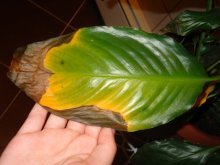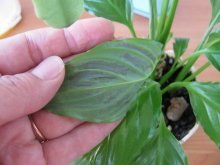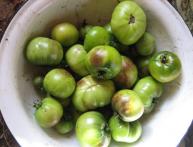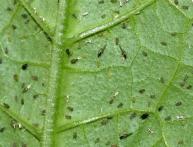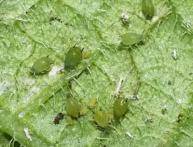Spathiphyllum: diseases, treatment and recovery
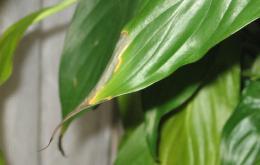
Spathiphyllum is an unpretentious, shade-tolerant plant native to South America and Polynesia. Ease of care has made this flower one of the most popular varieties of indoor plants. However, there are still troubles that spathiphyllum owners face: diseases. The treatment is quite simple, you just need to correctly identify the root of the problem.
Content:
Major pests
The main enemies that cause spathiphyllum diseases that need treatment are: mealybug, aphid, spider mite, scale insect, sooty fungus.
- Mealybug – a common pest that often causes spathiphyllum disease. Basically, it originates in conditions of increased dampness, hiding between the leaves. For preventive purposes, you should periodically inspect the flower. If the number of insects is minimal, it is easy to get rid of them by removing them with a rag soaked in an alcohol solution. Actellik or insecticides will help with global infection; an infusion of citrus peels is also effective.
- Sooty fungus can form on the upper side of leaves. Its occurrence is often indicated by blackening of the spathiphyllum. The disease must definitely be eliminated, as it interferes with the processes of photosynthesis and respiration of the plant, causing it to weaken. The best remedy sooty fungus - treating the affected surface with soapy water.
- The scale insect (shield aphid) at a young age is barely visible; its appearance is signaled by dark spots covering the leaves and stems of spathiphyllum. The disease is effectively treated by spraying the flower with a soap-tobacco solution mixed with a small amount of denatured alcohol or kerosene. Aphids mainly concentrate on the lower part of the leaves and use spathiphyllum juice for nutrition. Without proper treatment, the disease leads to curling and drying of the leaves of the flower. Gray, green and black aphids are found and spread instantly. Treatment of the plant consists of treating it with nicotine sulfate (1 gram per liter of water).
- And finally, the greatest threat to spathiphyllum is the spider mite. The pest mainly occurs on foliage, covering it with cobwebs. Its spread leads to the gradual drying out of the plant. Treatment involves removing the cobwebs and treating the flower with a soap solution. In advanced cases, more effective means may be needed: ground sulfur, insecticides.
The best way prevent defeat spathiphyllum pests - frequently wiping the leaves of the plant with a sponge and water. It is recommended to “bathe” the flower only when the soil is covered with a film.
What to do, if
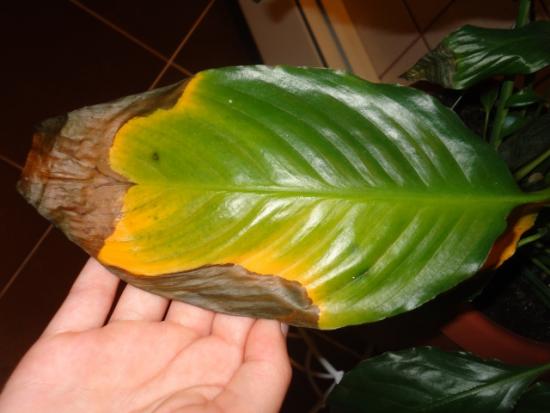
It is not always pests that cause the disease in spathiphyllum; treatment should be based on the cause:
- Poor growth. Slow growth of spathiphyllum may be associated with excessive amounts of moisture and light. The problem can be solved by choosing a more suitable place for the flower.
- Drying of leaf tips, formation of spots.If the tips of spathiphyllum leaves become overgrown with dry spots of a brownish-yellow hue, reminiscent of burns, this indicates overwatering.
- No flowering. If spathiphyllum does not bloom, fertilizing should be applied. It is also worth making sure that there is no need for replanting and increasing the humidity. If the plant is too large, dividing it may help.
- The flowers turn black. Spathiphyllum is a plant that reacts sharply to waterlogging of the soil, which can result in blackening of the core or side of the leaves. Another probable reason is excessive fertilization of the flower. Treatment consists of treating the soil with a solution of foundationazole (2 grams per liter of water).
- Yellowing of leaves. The main reasons: direct rays of the sun, insufficient or excessive watering. Yellowing of plant leaves after flowering is a normal biological process that does not require intervention.
- Leaf deformation. If the leaves of a flower become elongated and narrow, the problem may be a lack of light. Complete darkening is contraindicated for the plant; diffused light is most preferable.
Simple measures can help prevent the above problems from occurring.
Spathiphyllum needs timely replanting, proper feeding, and optimal air and soil microclimate. In particular, waterlogging of the soil poses a threat, which can result in the death of the plant.
Folk remedies
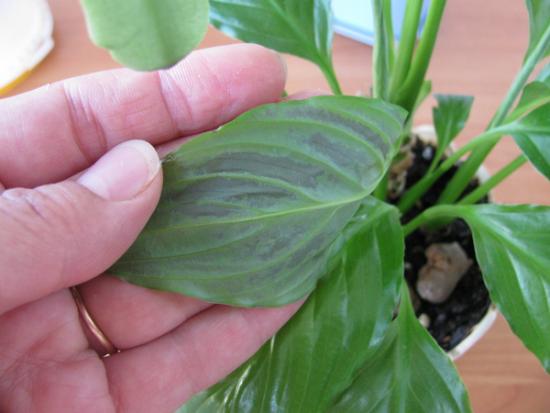
Traditional medicine offers effective remedies to help rid spathiphyllum of diseases.
An infusion of citrus peels helps in treating mealybugs. To prepare it, you need to pour 100 g of dry crusts with a liter of water.The infusion is kept in a dark, dry place for two to three days, then used to treat the affected areas of the flower.
Onion peel - effective remedy in the fight against such enemies of spathiphyllum as aphids and spider mites. The infusion is prepared simply: pour 5 liters of water heated to 40 degrees into 100 g of onion peel. The product is prepared within 4-5 days, then carefully filtered and mixed with a small amount of laundry soap. The resulting mixture should be applied to the affected areas of the plant.
By following simple rules for caring for spathiphyllum and regularly inspecting the plant for pests, you can count on long and abundant flowering.
Video about growing spathiphyllum:
Interesting information about the vegetable garden

